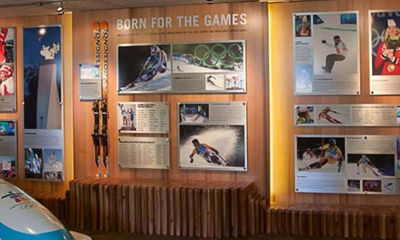SEA TO SKY ATHLETES
Whistler is an outdoor playground, so it’s no wonder that Whistler Blackcomb is a hotbed for young athletes who aspire to one day be on top of the podium. And there are a number who’ve done just that.
Athletes can take advantage of one of North American’s longest ski and snowboard seasons, world-class facilities, and unrivaled training camps.
USA halfpipe gold medalist and all-round snowboarding rock star Shaun White, cut his teeth on Blackcomb’s Horstman Glacier with the Camp of Champions summer program.
Freestyle skier Alex Bilodeau, who won Canada’s first ever gold medal on home soil, has been involved in the Momentum Ski Camps for many years and has recently returned as a coach to pay it forward.
There are a total of 13 Olympic and 5 Paralympic ski and snowboard athletes from the Sea to Sky Corridor who competed in the 2010 Winter Games. They are:
OLYMPICS:
Ashleigh McIvor (Gold Medalist In First Ever Ski Cross Athlete)
As an athlete with an inspiring confidence and a drive to accomplish whatever goal she sets for herself, Ashleigh McIvor was favoured going into the 2010 Games. The Whistler born-and-raised racer didn't disappoint, as she took home the first ever women's Skiercross gold medal and inspired a nation of young people and brought world-wide attention to the relatively new sport.
Britt Janyk (Alpine Skier) Michael Janyk (Alpine Skier)
Britt and Michael Janyk, both title holders of the Canadian Skiing Championships, competed on the same team at the 2010 Olympic Winter Games and, having skied at Whistler Blackcomb since childhood, felt right at home. The siblings have been living and training in Whistler since their teens, and are local heroes to Whistler residents. Britt and Michael led the parade through Whistler during Vancouver's opening ceremonies, reminding Whistlerites that as international as the Games are, inspiration starts at home.
Davey Barr – (Freestyle Skier)
Julia Murray (Ski Cross Athlete)
Justin Lamoureaux (Snowboard Halfpipe Athlete)
Kristi Richards (Freestyle Skier)
Maelle Ricker (Gold Medalist In Snowboard Cross Athlete)
Squamish snowboarder Maelle Ricker dreamt of winning an Olympic gold medal long before her sport was named an Olympic event. The Vancouver-born athlete placed fourth in the 2006 Turin Games after a crash left her hospitalized with a minor concussion. Ricker's win in Snowboard Cross in 2010 made her the first Canadian female athlete to win a gold medal on home soil, citing her near miss in Turin as the main source of her motivation.
Manuel Osborne Paradis (Alpine Skiing) Robbie Dixon (Alpine Skier)
Two of Canada's strongest and most dedicated ski racers made their country proud by putting it all on the line during the 2010 Games. Manuel Osborne-Paradis and Robbie Dixon, both racers who grew up skiing with the Whistler Mountain Ski Club, took their experience as Top 10 World Cup competitors to the Dave Murray Downhill course and, while they came away empty handed, remain resolutely focused on the 2014 Games.
Megan Tandy (Biathalete)
Mercedes Nicoll (Snowboard Halfpipe Athlete)
Rob Fagan (Snowboard Athlete)
PARALYMPICS:
Tyler Mosher (Adaptive Cross Country Skier)
Matt Hallatt (Para-Alpine Skier)
Born in Vancouver and currently residing in Squamish, Matthew Hallat is the Sea-to-Sky Corridor's only downhill Paralympian. His leg was amputated as a result of cancer when he was five years old and he began ski racing seven years later. He competed in the 2006 Paralympics Winter Games and has since become a five-time Canadian National Slalom Champion and Top 10 competitor on the World Cup circuit. Hallat placed 11th in the Men's Standing Downhill and 17th in the Men's Standing Slalom at the 2010 Paralympic Games.
Morgan Perrin (Para-Alpine Skier)
Sam Carter Danniels (Para-Alpine Skier)
Viviane Forest & Lindsay Debou (Para-Alpine Skier)
The visually impaired Vivian Forest is a legally blind Paralympian champion with only 4% vision. Forest's guide, Lindsay Debou, was born in North Vancouver and raised in the Whistler Mountain Ski Club. Together, they are Canada's strongest ski racing duo. Forest and Debou navigate gates at speeds of up to 120 km/h via two-way radio communication. At the 2010 Paralympic Winter Games, Forest and Debou stood on the podium at every event they entered, winning a total of one gold, three silver, and one bronze medal.


